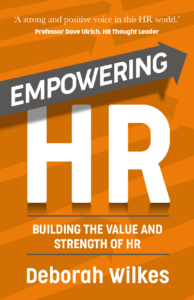How to build a continuous listening strategy
What are the benefits and how do you make it work?
A modern approach to gathering employee feedback
A continuous employee listening strategy, in the context of employee research and human resources, refers to a modern approach to employee feedback and engagement measurement that emphasises ongoing, real-time, and frequent data collection and analysis.
By regularly gathering feedback and insights from employees, organisations can make better informed decisions and therefore drive timely improvements.
Traditional employee surveys, which were historically only conducted annually, or bi-annually, have limitations in capturing the rapidly changing dynamics of today’s workplaces. A continuous listening strategy seeks to address these limitations by creating a more agile and responsive feedback loop between employees and their organisations. In short, it’s a change to ‘measuring as you go’, instead of ‘measure every once in a while’.
Key features of a continuous listening strategy in employee research
Real-time feedback: Instead of relying on periodic surveys, continuous listening tools and techniques enable organisations to collect feedback from employees on an ongoing basis. This can be done through various channels such as pulse surveys, feedback apps, or even informal conversations.
Address employee issues and concerns quickly: Continuous listening allows organisations to identify and address issues or concerns quickly. When a problem arises, HR and management can take immediate action to resolve it, rather than waiting for the next annual survey.
People analytics: Advanced data analytics and machine learning are often employed to analyse the large volumes of data generated through continuous listening surveys. These tools help organisations identify trends, patterns, and correlations in employee feedback, providing deeper insights into workforce dynamics.
Personalisation of employee feedback: Continuous listening often involves personalised feedback mechanisms. Employees may receive tailored recommendations or resources based on their individual feedback, helping them improve their work experience. Such personalisation needs to be handled carefully regarding data protection legislation, consent must always be sought, and employees should have a secure login to access their personal data.
Employee engagement and retention: By continuously monitoring employee sentiment, organisations can proactively work on improving engagement and reducing turnover. They can identify factors that contribute to employee satisfaction and take steps to enhance these aspects. When data from exit surveying is cross referenced with responses to similar questions about engagement and staying reasons, inferences and correlations can be drawn. Warnings of possible dissatisfaction and increased likelihood of leaving can even be identified based on such links.
Well-being of employees: With the increased emphasis on well-being in the workplace, a continuous listening strategy also allows organisations to track and respond to employees’ well-being needs and concerns in real time. This needs handling with care of course.
An inclusive workplace culture: Organisations can use continuous listening to assess their workplace culture and inclusivity efforts – regularly. This helps in creating a more inclusive and diverse workforce and in monitoring a well-tuned and positive DEI culture which is also compliant.
Steps to make a continuous listening strategy work in your organisation
In employee research, continuous listening is a strategic technique that fits with the fast-paced and dynamic nature of contemporary workplaces. It enables businesses to stay in touch with their staff, pinpoint areas for development, and make data-driven decisions to foster a more supportive and effective workplace. Effective continuous listening implementation necessitates thorough preparation and the application of numerous techniques.
Define your objectives right from the outset: Clearly define what you aim to achieve through continuous listening activities. Are you looking to improve employee engagement, customer satisfaction, or product quality? Your objectives will guide the entire process. Different elements in your mix of listening exercises can achieve different goals but trying to do too many things at once may mean you don’t do any of them very well. Pick and stick to a small number of subject ‘foci’.
Select the right tools and technologies: Invest in the appropriate tools and technologies for data collection and analysis. This may include surveys, feedback platforms such as the one offered by Enable-HR International, social listening tools, and data analytics software such as Amazon QuickSight.
Data privacy and security: Ensure that you have robust data privacy and security measures in place (and review often), especially when handling sensitive employee or customer data.
Measure impact: Assess the impact of your continuous listening efforts by monitoring key performance indicators (KPIs) related to your objectives. Determine if the changes you’ve made have resulted in improvements.
Use diverse data sources: Gather feedback from various sources, such as online employee surveys, customer reviews, social media, and performance evaluations. This provides a more comprehensive view of your organisation.
Real-time monitoring: Track trends and new problems using analytics and real-time monitoring. This enables you to quickly fix issues. Numerous BI dashboards or custom tools include flagging to instantly alert you to KPI changes that differ from your typical ratings. Enable-HR leverages the power of Amazon QuickSight, which is built into their secure online surveying platform.
Steps to take when working with your employees
Communicate and take action: Share the findings of ongoing listening activities with employees. Show them that the research has yielded useful feedback and that you value their input.
Implement changes: Act on the feedback by implementing real adjustments and modifications in response to the knowledge gained.
Iterate and improve your research approach: Continuous listening is an ongoing process. Regularly review and refine your feedback collection methods and strategies based on the results and feedback from stakeholders. Perhaps questions need amending or new ones adding.
Provide training and support: Provide training and support to managers and leaders on how to effectively use feedback to drive positive change. Ensure they understand the importance of continuous listening.
Understanding and implementing feedback
Create a feedback culture: Foster a culture of openness and transparency where employees feel comfortable providing feedback. Encourage honest and constructive criticism. For more information on this topic see this resource from Enable-HR International.
Undertake regular Pulse Surveys: Conduct regular pulse surveys or quick check-ins with employees (and perhaps customers too) to gather feedback on specific topics. These surveys should be short and frequent to keep the feedback loop active and fresh.
Collect anonymous feedback: Offer anonymous channels for feedback, especially for sensitive issues. This can encourage more honest responses from employees who might fear repercussions. Whistle blowing or anonymous reporting of potential problems are good examples.
Feedback analysis: invest in data analysis and reporting solutions, whether it be through software or hiring a seasoned consultancy like Enable HR International to transform unprocessed feedback data into useful insights. Prioritise areas that need improvement and identify essential themes. The rapidly developing discipline of machine learning can be extremely helpful here.
Feedback loop closure: Close the feedback loop by sharing the outcomes of changes made because of feedback. This demonstrates that you value employee input and you act upon it.
Leadership support: Ensure that senior leadership is fully supportive of continuous listening initiatives and actively participates in the process.
Enable HR supports your continuous listening strategy
It could take some time before you see noticeable gains, so keep in mind that constant listening is a practise that is ongoing. However, by methodically gathering and acting on feedback, organisations can become more agile and responsive to the needs and concerns of employees and customers, ultimately improving the retention of the best employees, lowering turnover, creating more fulfilling and culturally strong workplaces, and ultimately improving your organisation’s bottom line.
Enable-HR International can support organisations with your continuous listening strategy right from the outset, we can help when setting up your listening touch points, designing the right questions to ask and guide you through using our secure online surveying engine which can automate much of the timings of your listening programme. We then handle all invites and reminders to gather your feedback and then make the results available to everyone in your organisation who needs clear and meaningful reports. Having a continuous listening strategy and putting it into practice can help you drive up engagement and performance whilst reducing turnover and lowering wasted resources. For information about how Enable-HR can help, contact George Naylor for a no obligation chat.
These articles may also interest you:


